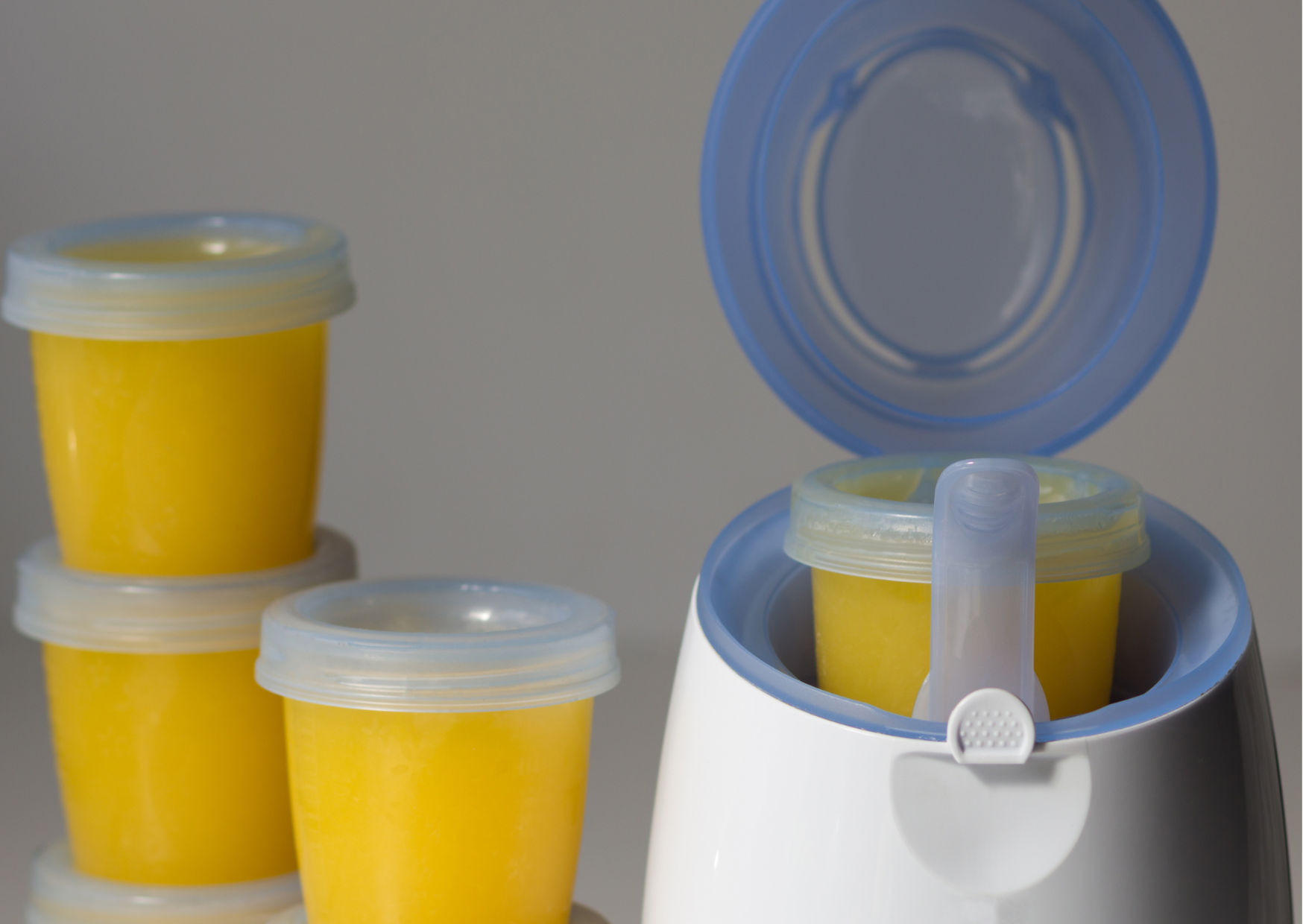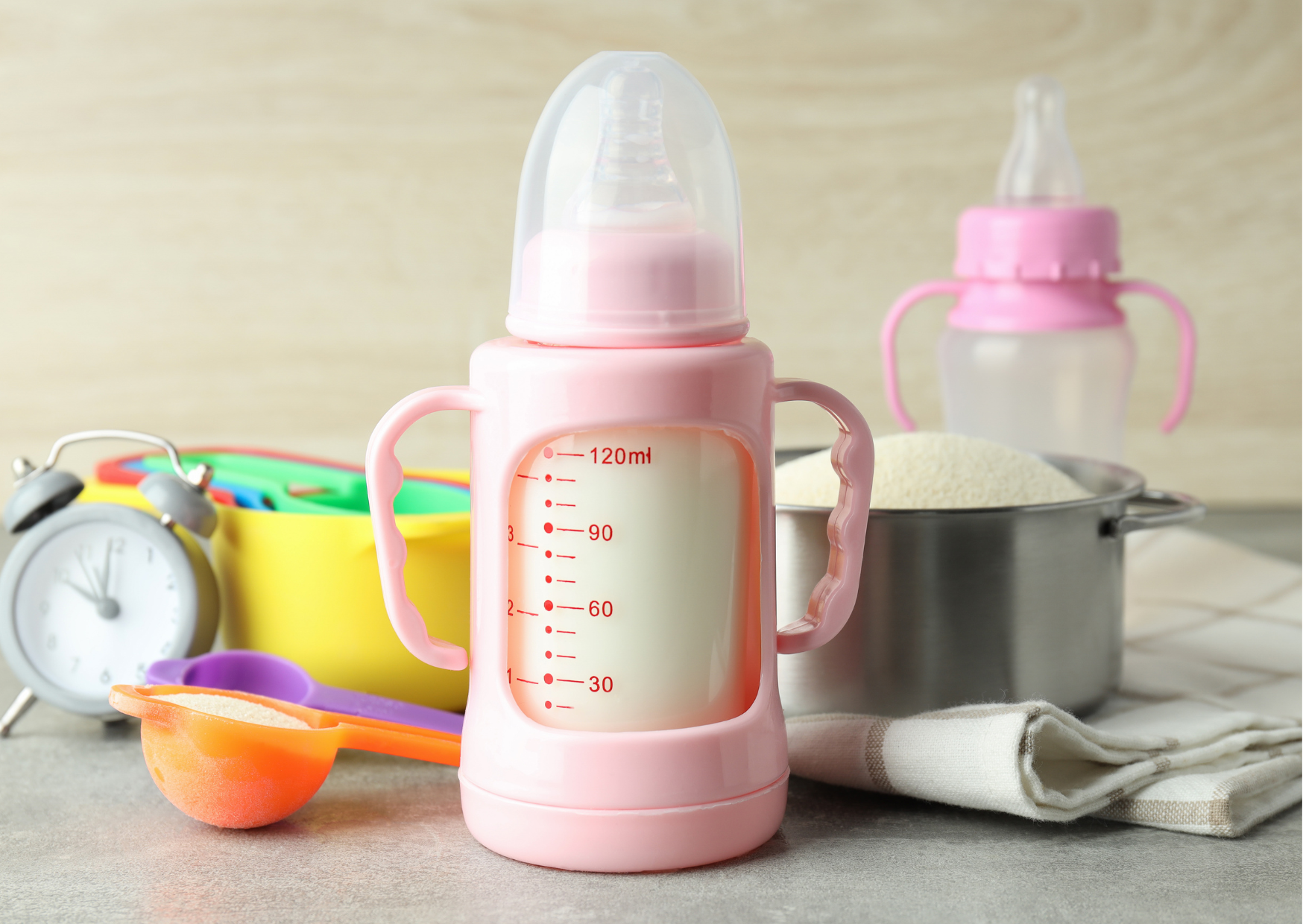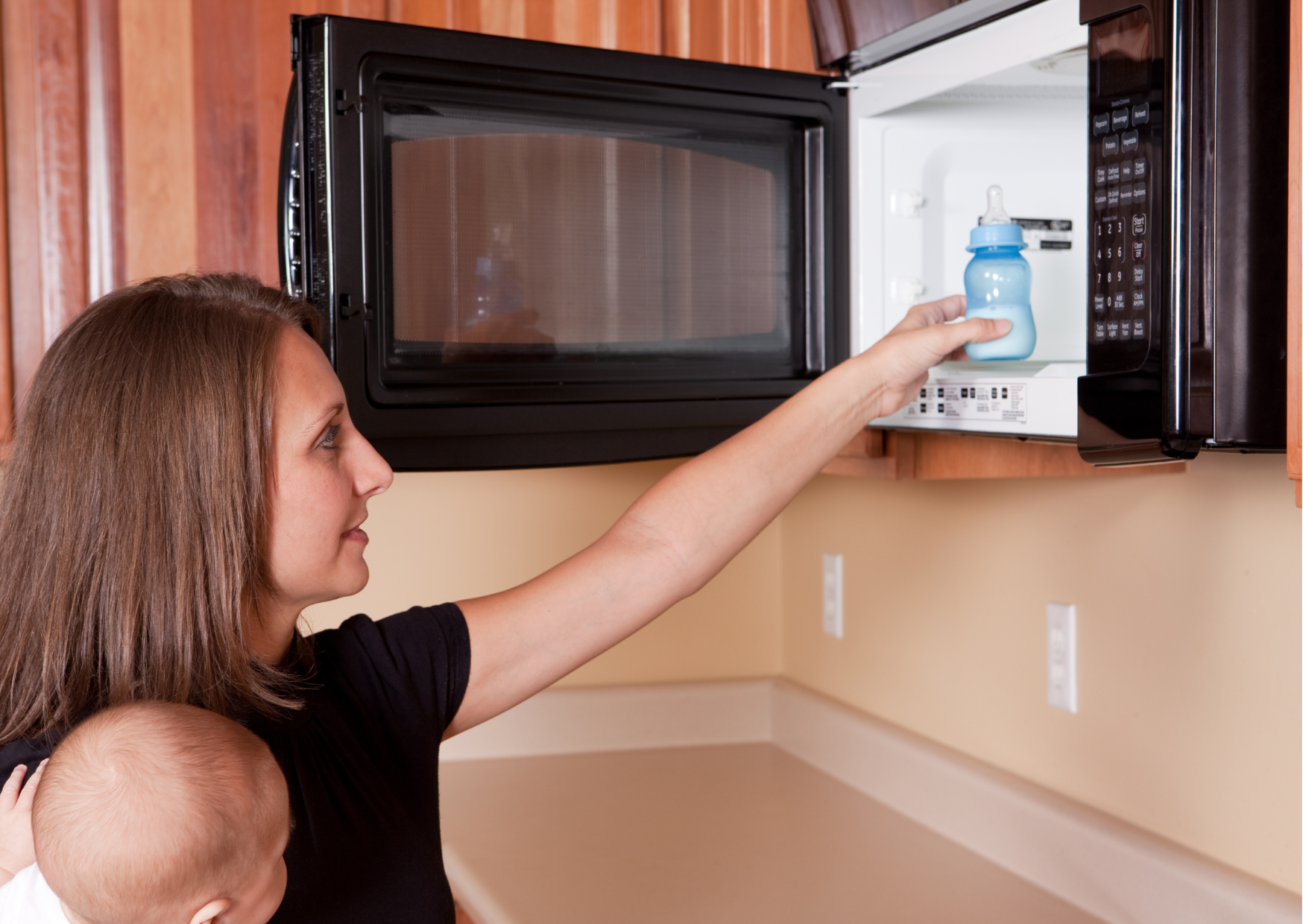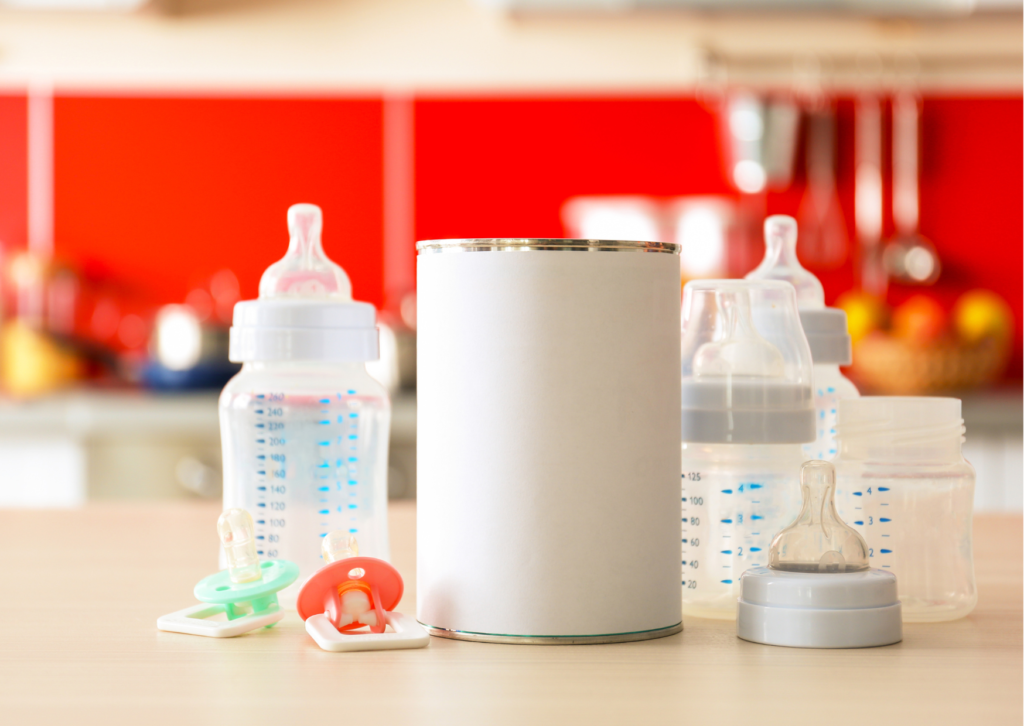When it comes to bottle warmers, there are a few different methods you can use: bottle warmer vs hot water vs microwave. So which one is the best? Well, that depends on your needs. Here we will discuss the pros and cons of each method so that you can make the best decision for your family.
What Is Bottle Warmer?

A bottle warmer is a device used to warm baby bottles before feeding. Typically, electric bottle warmer use one of two methods to heat the bottles: steam or water bath. Steam bottle warmers work by circulating hot steam into the bottle to quickly and evenly heat the milk or formula.
In contrast, water bath bottle warmers use a container of hot water as the source of heat. Regardless of which heating method is used, bottle warmers are designed to be fast and convenient. They allow parents to quickly thaw or heat milk at any time during the day, helping to ensure that babies get the nutrition they need in a timely way. So if you have a newborn baby at home, investing in a bottle warmer is definitely a smart choice!
Related Articles >>> Is Baby Bottle Warmer Safe
Pros Of Bottle Warmer
Ease Of Use
Bottle warmers are simple to operate and require little effort to warm milk. Just plug the device in, add your desired bottle, and wait for it to warm up. This makes them ideal for busy parents or caregivers who may not always have time to carefully heat bottles on the stove or in a microwave.
Safety
Bottle warmers are designed with safety in mind and incorporate features that minimize the risk of burns or other injuries. For example, most devices have slip-resistant feet and cord winders so that bottles can be safely warmed without slipping off their supports. Its airtight lids prevent excessive steam from escaping and potentially scalding delicate skin and hands.
Temperature Control
Breast milk bottle warmers allow you to precisely control the temperature at which your baby’s bottles are warmed. With adjustable settings, you can choose exactly how hot or cold your bottle should be before giving it to your child, lifting any fears of overheating or underheating liquids. And because bottle warming times are fairly short – typically only a few minutes – you can easily keep track of the temperature without constantly hovering over your device as it warms up.
Convenience
Not only do bottle warmers work quickly and effectively at warming bottles safely, but they also make life easier for busy parents by requiring minimal cleanup after each use. Many models can simply be wiped down with a damp cloth or put in the dishwasher between uses so that you don’t have to spend time scrubbing dirty parts by hand after each feeding session. These practical benefits make baby bottle warmers an excellent choice for any parent looking to ease the process of feeding their baby!
Related Articles >>> What Are The Benefits Of Bottle Warmer?
Cons Of Bottle Warmer
High Cost
Bottle warmer can be quite expensive relative to other feeding options for babies. Not only do you need to purchase the actual warmer itself, but many also require special bottle inserts or other accessories to work properly. If you want convenience and speed, you might have to pay extra for a heated base that quickly warms bottles as soon as they are placed on top. While this added cost may not be prohibitive for parents who want to exclusively feed their babies with formula, it can be another burden for those who would rather breastfeed.
Environmental Impact
One of the least obvious cons of using a bottle warmer is its environmental impact. Most bottle warmers come equipped with power cords and plugs capable of generating large amounts of heat energy each time they are used to warm a bottle.
Even though these cords and plugs are often made from eco-conscious materials like stainless steel and recycled plastics, it is still greatly beneficial to opt for simple alternatives like immersing small bottles in warm water when possible.
Doing so will help reduce your overall carbon footprint while providing the same service as using an electric warmer world! In short, if you want to reduce your ecological footprint while taking care of your baby, using alternatives like hot water baths or traditional stovetop bottle warmers whenever possible may be a better fit for your lifestyle choices.
Chance Of Malfunction
Because bottle warmers are often plugged into wall outlets at nap and bedtime, they present a risk of overheating or electrical shock if flaws in their design cause them to stop functioning properly. Some parents have reported that the surfaces on which the bottles take temperature can burn a baby’s mouth due to being too hot. There are some downsides to bottle warmers, which is why many parents prefer alternative options like heated blankets or hot water baths.
Related Articles >>> What Do Newborn Parents Need The Most?
How Does Hot Water Works In Warming Baby Bottle?

To effectively reheat a bottle, parents often use hot water because it facilitates quick and even heating. The hot water heats up the bottle from the outside so that there are no cold spots, and it reaches the desired temperature more quickly than other methods like waiting for microwave or electric bottle warmer to complete its cycle.
Pros Of Using Hot Water
Completely Free
Using hot water is a completely free and accessible method that does not require any costly equipment or special tools to warm bottles. It can be prepared much faster than traditional warmers, making it easier to get your baby fed in a timely manner.
Quick And Convenient
Whether you’re at home or on the go, simply fill a mug with hot water from your tap, stir it for a few seconds with a clean spoon, and then use this hot water to heat up your baby’s bottle.
This method can be especially useful when you are out and about because you can simply stop at any nearby establishment and heat up your baby’s formula instantly.
Additionally, if you have to spend time warming your baby’s bottle before you start feeding them, this method will help to keep them comfortable and relaxed until their food is ready for consumption.
Related Articles >>> Is A Bottle Warmer Necessary For Breast Milk
Cons Of Using Hot Water
Difficulty In Getting The Right Temperature:
Hot water tends to fluctuate in temperature quite rapidly, meaning that you may start with hot water that quickly becomes too cool for a baby’s bottle.
This can be extremely worrying for parents, as it risks a baby being burned by overheated milk or formula.
It can be difficult to tell whether the milk is at the correct temperature without opening the bottle and risking spilling it all over yourself or your child.
Risk Of Scalding
Bottle warmers and microwaves have precise temperature settings to avoid overheating the milk, but when you simply use hot tap water, it’s easy to overshoot the safe temperature threshold accidentally.
This can cause serious short-term injuries, such as burns or blisters on the baby’s lips, tongue, and mouth. In addition, boiling water can lead to more severe long-term consequences like scarring and hearing loss if steam gets trapped in the baby’s ear canal.
How Does Microwave Works In Warming Baby Bottle?

The functioning of the microwave in warming a baby bottle can be described at many different levels. At its most basic level, the microwaving process works by inducing rapid vibrations throughout the liquid within the baby bottle.
These accelerated vibrations then generate heat as they collide with molecules of water and other components within the formula. These collisions result in minute temperature increases and cause the formula’s overall temperature to rise over time.
Because microwaves penetrate far more deeply into an object than the general surrounding air temperature, microwave heating is often more effective than traditional passive heating methods such as hot water baths or warmers.
Pros Of Using Microwave
Quick And Efficient
Microwaves are incredibly quick and efficient, allowing you to heat a bottle in just a few short minutes. They also allow for more precise temperature control than other warming methods, such as placing the bottle in hot water or under running tap water.
Cons Of Using Microwave
Destroys Nutrients In Breastmilk
Although the convenience of using a microwave can be tempting, it comes with some serious drawbacks. For example, using a microwave can cause breast milk or formula to lose many of its important nutrients and minerals.
The heat produced by microwaves is uneven and can damage the sensitive cells in these liquids. While microwaves may offer some benefits in terms of speed and convenience, they should be used with caution when it comes to warming infant formulas and breast milk.
Final Thoughts
Deciding how to warm up your baby’s milk can be a tricky decision, especially when it comes to choosing between a bottle warmer, hot water, and the microwave. In the end, the best option will likely depend on your individual preferences and needs. But whichever method you choose, be sure to carefully consider all the potential risks and benefits before making your final decision.
Related Articles >>> How To Safely Prepare Baby Formula














